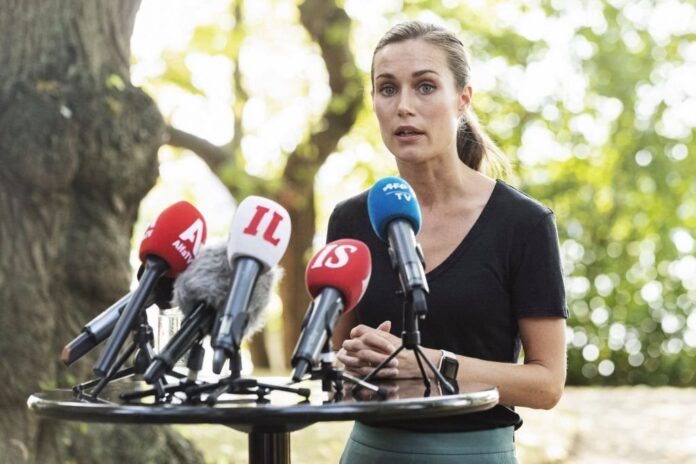HELSINKI: Finland votes Sunday in legislative elections that could see the country take a dramatic turn to the right, as centre-right and anti-immigration parties vie to unseat Social Democratic Prime Minister Sanna Marin.
After the breakthrough by nationalists in neighbouring Sweden and the far right’s victory in Italy last year, Finland could become the latest country to join the nationalist wave in Europe.
The vote comes just days ahead of Finland’s formal accession to the NATO defence alliance, made possible after Turkey ratified the country’s membership bid on Thursday.
“The polls show that the more right-wing political trend in Finland is gaining strength,” Juho Rahkonen from the E2 research institute told AFP.
Traditionally, the biggest of the eight main parties in parliament gets the first chance to build a government, and since the 1990s that party has always claimed the prime minister’s office.
“We are aiming to win this election and continue our work for a more sustainable future,” Marin told reporters at the sidelines of her final campaign event in Helsinki.
The latest survey published Thursday by public broadcaster Yle showed the centre-right National Coalition holding a thin lead at 19.8 percent, with the nationalist eurosceptic Finns Party in second place at 19.5 percent.
The Social Democratic Party (SDP) led by Marin, who took office in 2019 as the world’s youngest prime minister at age 34, was in third place with 18.7 percent.
“We have had a great campaign. We have the best candidates all over Finland and we are first in the polls, so I’m optimistic,” National Coalition leader Petteri Orpo told AFP at a campaign rally on Saturday.
While Marin ranks as Finland’s most popular prime minister this century in polls, she is struggling to convert her popularity into SDP seats in parliament.
“Although she is exceptionally popular, she also arouses opposition. The political divide has been reinforced,” Rahkonen said.
While some view her as a strong leader who deftly navigated the Covid-19 pandemic and the NATO membership process, others see the rising public debt on her watch and scandals over video clips of her partying as signs of her inexperience.
Finland’s debt-to-GDP ratio has risen from 64 percent in 2019 to 73 percent, which Orpo’s National Coalition wants to address by cutting spending by six billion euros ($6.5 billion).
Marin has defended her track record and accused the National Coalition of wanting to “take from the poor to give to the rich”.
Far-right surge
A top spot for the far-right Finns Party, and a far-right prime minister, would be a first in Finland, with its leader Riikka Purra poised to top her party’s record score.
Her eurosceptic party wants a hard line on immigration, pointing to neighbouring Sweden’s problems with gang violence as a cautionary tale.
“The biggest issue at the moment is the growing juvenile delinquency,” she told AFP on Saturday, claiming that “most of these street gangs and young criminals in the streets are migrants”.
Support for the populist party has surged since last summer, spurred by the “rise in energy prices and the general decline in purchasing power” following Russia’s invasion of Ukraine, Rahkonen said.
While the party served in a centre-right government in 2015, it later split into two factions, one hard-line and the other moderate, with only the hard-liners still in parliament.
The Finns Party sees an EU exit as its long-term goal and wants to postpone Finland’s target of carbon neutrality for 2035.
Difficult negotiations
Negotiations to build a government are expected to be thorny.
Marin has ruled out forming a government with what she calls the “openly racist” Finns Party, while Orpo has said he will keep his options open, despite clashing with the Finns Party on immigration, the EU and climate policy.
This gives him a central role in forming the next government, as both the Finns Party and the SDP would likely need him to obtain a majority.
Voting stations open at 9:00 am (0600 GMT) and close at 8:00 pm (1700 GMT), when the results of advance voting will be published. About 40 percent of voters have cast their ballots in advance.






















